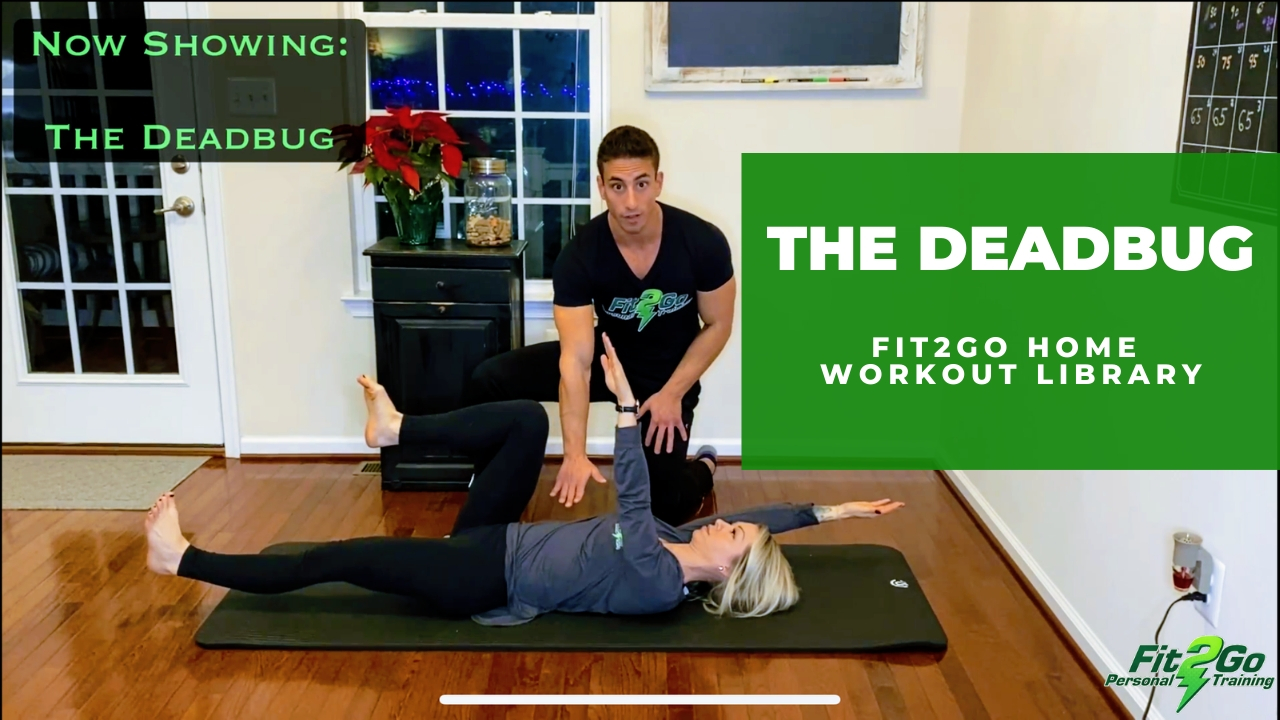
07 Jan The Deadbug
What’s the best exercise for core stability?
The plank?
Not so fast.
Here’s the deal:
The plank IS a fantastic exercise to strengthen your core and stabilize your spine.
BUT the reality is that most people can’t perform a plank properly.
As a result, most people *think* they’re strengthening their core and developing a healthy spine, when in reality, they’re training their body to have terrible posture and chronic back pain.
To explain, let’s breakdown the exercise so you understand the biomechanics:
The plank is basically a push up position, except your forearms are on the floor, rather than your hands.
In this plank position, gravity is acting on your body, trying to pull your stomach to the floor.
Gravity is trying to get you to sag your stomach, arching your lower back.
Your job is to fight back against gravity by squeezing your abs in tight, and keeping your spine perfectly straight.
That’s the entire exercise, and that’s why it’s such a fantastic one.
See, more traditional ab exercises like sit ups or crunches are called “concentric” movements. These require your body to produce enough force to actually move through space.
While normally this would be a good thing, your core’s main function is NOT concentric movement.
In other words, the main function of your abs and core muscles is NOT to flex your spine and curl you into a ball.
Rather, your core’s job is to RESIST movement.
Your core is composed of several different muscle groups that all work together to keep your spine stable.
These muscles are always firing.
Anytime you move, your center of mass changes, which requires your core to adjust its force production so you don’t fall over.
This is why you couldn’t sit up for the first several months of your life. It took some time to learn how to control these muscles and produce just the right quality of force to hold yourself upright. Then, it became second nature, and you forgot you were even doing it.
Alright, so that’s why the plank is great. It’s designed to strengthen your core’s ability to resist movement, as you fight gravity.
So then, what exactly is the issue?
The issue, my friend, is that most people LOSE this fight to gravity.
If you go to your local gym and find 10 people performing planks, at least 7 of them will be sagging their stomachs and arching their lower backs.
As a result, they are training their core NOT to fire, and instead for their lower backs to pick up the slack.
That’s a recipe for chaos, dysfunction, and lots of trips to the doctor.
The truth is that the plank is not a beginner exercise. You can’t just jump in on day one and perform a perfect plank. Furthermore, unless you have a trainer there to coach you, you likely can’t even tell if you’re keeping your spine neutral, or flexing it into a horseshoe.
The good news is that there is a better place to start at. It’s called “The Deadbug”.
The deadbug uses the same principles of core stability that the plank does, but it’s easier to modulate to your exact fitness level.
Here’s how it’s done.
INSTRUCTIONS:
Starting Position:
Lie on your back with your arms straight up towards the ceiling (hands directly above the shoulders). Your knees should be bent at a 90 degree angle and held directly over your hips.
Step 1: Start squeezing your belly in towards the floor. Think about curling your hips back towards your shoulders. Your back should be pushed flat against the floor with no space in between.
Your job is to hold your torso in this position while your limbs move throughout the exercise.
Step 2: Slowly reach your right arm behind you towards the floor. At the same time, extend and lower your left leg. Pause when both your arm and leg are right above the floor. Hold for two seconds, squeezing your abs and paying attention to the challenge that this movement created.
NOTE: Only lower your limbs as low as you can without arching your lower back. The exercise is counterproductive if you are not maintaining a flat back — so stop BEFORE you start to arch. Gradually work on increasing your range of motion as you get stronger.
Step 3: Return both limbs to the starting position.
Step 4: Repeat with the opposite sides.
Repeat for the recommended number of repetitions.


